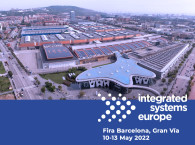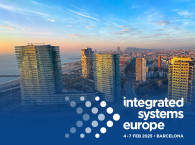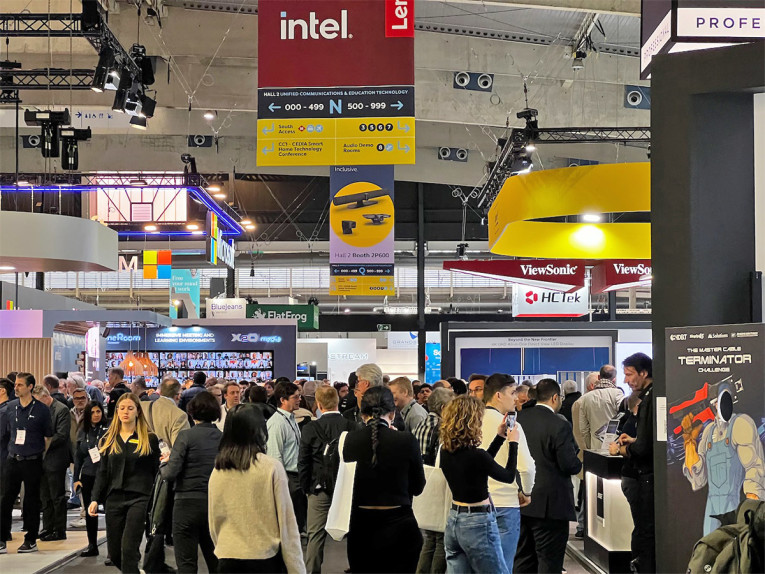
Since my return from Barcelona last week, I have made an effort to quickly read what other press and industry colleagues are saying about this first edition of the ISE 2023 Barcelona trade show (January 31 to February 3, 2023). And the first thing to note in many of those comments is that ISE is a different show to many people, depending on their business focus. Common to most comments about ISE 2023 on social media are adjectives such a "phenomenal," "great," "a blast," and "extremely successful." This is not of course the result of any serious business ROI assessment but purely the first raw impressions of a show that surprised for the large attendance and vibrant environment.

According to Integrated Systems Events, the organization that promotes ISE, the 2023 edition confirmed this is "the world’s leading audiovisual and systems integration exhibition." ISE 2023 received "58,107 unique attendees from 155 countries, alongside record-breaking occupation in the city’s hotels, bars, and entertainment venues, and with exhibitors reporting unparalleled footfall on booths across the largest ever ISE show floor." I can totally confirm.
The numbers were published on the last day, because access control at these shows is done electronically, with registration through a mandatory smartphone app. This year ISE also added printed badges. As I pointed out in my report, the missing printed badges puzzled everyone in the rehearsal edition of 2022, when no one could distinguish who was an exhibitor, a visitor, or press.
What was probably not in the organizers’ plans for this year was how bad the access control would be, causing huge crowds, long lines, confusion, and lots of waiting for regular visitors to get inside during the first three days. Given that Mobile World takes place in this same exhibition grounds a few days later, with three times more visitors, and I have never witnessed this type of difficulties to get inside, this is something that will certainly be reviewed and needs to be sorted next year.

Of course, those coming from London, Stockholm, Hamburg, or Chicago, IL, might say that all that doesn't matter given the much nicer weather. Well, for those of us coming from warmer locations, this year Barcelona was awfully cold. And when it's cold, no one wants to wait an hour in a taxi line, particularly those visitors who decided to go to the show in just a shirt because they confuse Barcelona with Summer (I always knew there would be some...).
For Mike Blackman, Managing Director of Integrated Systems Events, everything is rosy in "the wonderful city of Barcelona." As he stated, "We’ve had unprecedented visitor levels to the show, so much inspiring content and features on display, and ground-breaking visits from the King of Spain on Tuesday and the President of Catalonia on Thursday to add both a royal and a political seal of approval to the show. This week at ISE 2023 confirms that we can safely say the global AV and systems integration industry is back with an impressive bang!”
Kudos to the ISE team, but there's a lot to improve.
The good thing is, I know they are reading this and taking notes.


I remember perfectly when the Integrated Systems Europe was born, first as a small affair in the Geneva airport in Switzerland, followed by the first real edition at the RAI in Amsterdam, in 2005. I was there, and I revisited my original show report from that time.
The 2005 Amsterdam ISE show had an attendance figure in excess of 7,400 visitors from 78 countries, with 220 exhibitors from 27 countries. It was considered the largest single pan-European event, "offering an umbrella platform for the systems integration industry across commercial, industrial and residential applications." It was as much about Displays, Digital Signage, and IP networking capabilities, as it was about security systems, and audio, of course. A lot of audio.
At that time, the ISE show was jointly sponsored by the three leading electronic systems industry associations: the Custom Electronic Design and Installation Association (CEDIA), the International Communications Industries Association (ICIA), and the National Systems Contractors Association (NSCA). ICIA was the promoter of InfoComm the conference and trade exposition for audiovisual communications professionals, which would later merge with the NSCA, the leading trade association representing the commercial electronic systems industry, and eventually rebranded as what is today AVIXA.
Unlike what was happening for many years in the US, where systems integration for audio, video, home automation, and security installations, among others, had their own dedicated annual exhibitions, in Europe these industries have mostly shared international events such as Prolight+Sound in Frankfurt or even CEBIT in Hannover (still today, the world's leading industrial technology trade show). For a few years, InfoComm was also promoted in Europe without much success.
As a direct result of the organization's convergence taking place, in 2004 the NSCA, InfoComm, and CEDIA agreed to create a new international calendar of events and conferences that would be called Integrated Systems. Integrated Systems Europe and Integrated Systems Asia were born, immediately followed in 2006 by new events with the same name in India and China (those never received much support and never took off). Soon after the NSCA itself renamed its annual exhibition in Las Vegas, NV, which became Systems Integration Expo, later merging with InfoComm. In the US, InfoComm and CEDIA shows remained independent, given the separate focus on commercial systems and residential integration, respectively - which in North America are handled by separate companies and accredited professionals, which require separate certification.

The ISE show was clearly propelled by that convergence between traditional system integration applications and new audio and video technologies, digital signage (then a rising force), smart home, and building automation, and more importantly, IP networks. The major driving force behind ISE was the infrastructure evolution to IP systems. At the time (when the show appeared), Gigabit Ethernet was a reality and 10GB Ethernet was on the horizon.
Looking back at ISE 2006, EtherSound was still the largest promise in audio networking, and Sonos was at ISE to promote its home music (wired) networking systems Sonosnet, with Sonos ZonePlayers being able to play content from an iPod, Mac or PC all over the home. Much like Resound, Sonance and others, the key focus was to provide iPod docks, which could be accessed and controlled by AMX and Crestron systems. It was a very different world from today's, Web, Cloud, and Wirelessly connected systems.
Another important trend in the genesis of ISE's exponential success was that networked systems integration was transversal with control and security applications - another potential expansion that ISE never fully embraced. In compensation, it fully incorporated the then-emerging videoconference market, which would expand to become today’s core of the show, with Unified Communications and Collaboration, and now Conferencing.
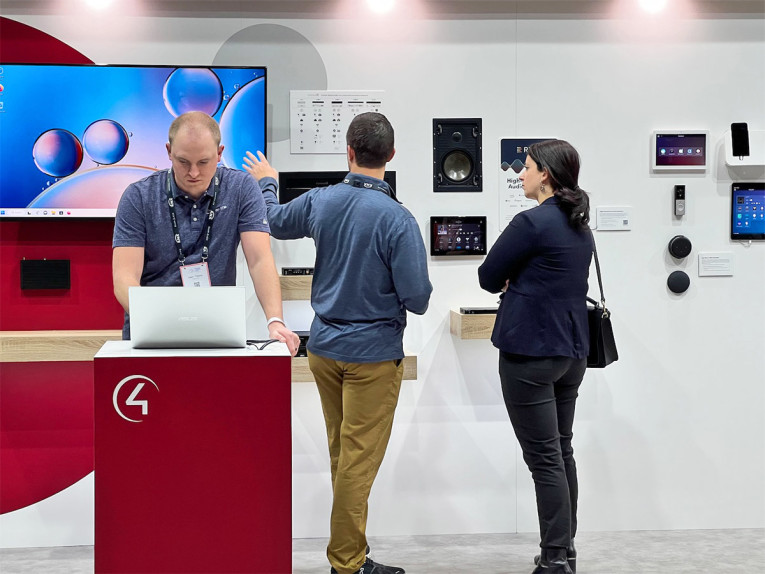


There is also the assumption that ISE is about "AV Solutions." Again, much like no one knows what IoT is (other than the original industrial perspective of connecting sensors), being an experienced audio and video systems professional for more than 30 years, I still don't know what "AV" means. When anyone mentions "AV" I think of a VGA connector or an HDMI (and not in a good way). In today's systems integration disciplines that involve video and audio, the glue that holds everything together, is far more complex than that, and spreads over IT, IP, and connectivity using telecom and all other network technologies, from Wi-Fi to 5G/6G. Audio signals, analog, and digital, much like video, are completely separate worlds that flow through those same pipes.
In its May 2022 effort, ISE partnered with something called IoT World Congress to fill another hall - they describe the space as focused on "disruptive technologies and digital transformation," which could be anything literally. There was a suggestion that yacht systems would be the next big thing in systems integration, but that was before Russia invaded Ukraine and the Russian oligarchs saw their super-yachts apprehended.
Clearly missing from the new ISE vision - or not sufficiently visible - is the systems infrastructure technology approach. If you look at ISE, cables are shown everywhere, but very few cable manufacturers are exhibiting. Unlike any show in the US where I can easily find a booth that sells crimping tools and installation racks, at ISE apparently no one needs those.
In Hall 5, which was more video oriented, I found a Japanese manufacturer in a very small booth showing very interesting active, optical, long-length USB/Thunderbolt cables. They were surprised they were not seeing much interest from the many visitors passing by, and actually asked me which other shows would be more suitable for those products. I recommended they go to IBC in Amsterdam for Europe, and NAB or NAMM in the US as a more suitable market, given that content production is more USB/Thunderbolt-based. But apparently ISE says that content production is now also the focus of its show...
Infrastructure should connect the companies attending ISE today, which represent different verticals in residential technologies and integration, unified communications and collaboration, commercial integration, and increasingly event production, which clearly was not in the original scope for this trade show. In Europe, Prolight+Sound in Frankfurt or the PLASA Show in London were always oriented to event production, even if more entertainment oriented. Now, by appealing to the participation of lighting and stage manufacturers, as well as cameras and microphones, ISE is trying to incorporate not only the live entertainment and events industry but also the "content production" industries as a way to grow even more. From installation to touring, from home entertainment to content production and distribution.
It might happen, but I truly believe that ISE should instead expand in other directions that better hold the systems integration sectors together. Creativity and art installations might sound more sexy and appealing for promotional material in a show in "wonderful Barcelona," but the installation industry has a different business mindset. Yes, there are shows about the technologies and systems that support cultural industries. I doubt that ISE needs to incorporate that to become a better show, but I understand the temptation.
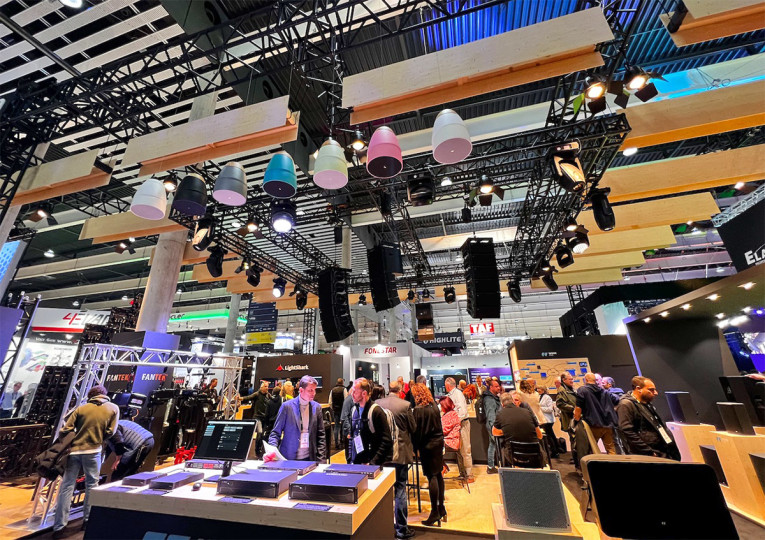
So, what's holding these companies together for a single show, considering that costs for everyone skyrocketed, and the event becomes harder and harder to manage in its multiple dimensions? Is this sustainable?
As I wrote in my "ISE 2019: First Impressions" article "no matter the cold, wind, and the rain" that was felt in early February in Amsterdam, the more than 81,268 registered visitors and 1,301 exhibitors were motivated by the strong business environment and glimmering opportunities created by the systems convergence in the installation industries, as I just described.
My main concerns for the future have to do with an "evolution" - as I already witnessed at other shows that have also greatly expanded over time - that doesn't award the best results. One concern is the creation of silos or "shows within the show." This doesn't allow for people to fully understand the whole business potential, and frequently leads to the creation of separate verticals that could benefit from working together.
ISE at the Fira de Barcelona is now six halls, and even if still has room to grow inside those same halls, it can grow to 10 halls in the future. Unlike the RAI combination of small and large halls that created an irresistible maze for visitors to explore and discover, ISE in Barcelona is geometrically divided into the pro audio area, the screens and projection area, the UC&C area, the video and displays area, the residential installation area, and (apparently) adding a lighting area in the future. That separation already explains why ISE was a totally different show to so many people.
Frankfurt Messe also expanded that way, with Musikmesse, Prolight+Sound using multiple large halls separated between them, leading to visitors from Musikmesse not visiting the audio technologies areas, and vice-versa. Now, Prolight+Sound could change the name to Prolight only, because there's only light companies and one hall left to that show.
The dynamics of trade shows are fascinating and evolve with the market, so there's no way of saying what comes ahead that might change everything (like the global pandemic did), but the people's flow and the intersection of business in trade shows is a dynamic that promoters need to monitor carefully.

If you need to filter and organize hundreds of small 25-minute meetings ahead of a show, it's more than certain that everything will be a blur afterward. If there's no time for simply walking and discovery, or exhibitors don't have time to speak to unscheduled visitors, business doesn't thrive. And for exhibitors, there's no time to reach out to other halls at the extreme ends of the Fira and discover a disruptive startup or that market-changing innovation that could fundamentally compromise their current strategy. Also, with vertical silos, there's less chance for dialog in the much-needed standards framework over IP, leading more companies to be tempted by Milan-like strategies, or ignore Matter because "it's just for the smart home."
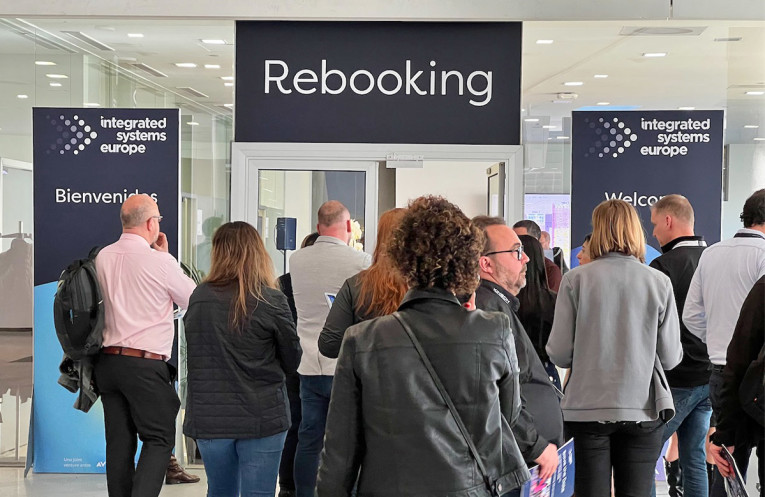
ISE returns to Barcelona from January 30 to February 2, 2024. Mind you, the 2024 NAMM Show happens January 25–28, 2024. So, if you are attending that one, you will have basically one day to fly from LA to Barcelona.
And if you are an American company traditionally exhibiting at InfoComm (June) or CEDIA Expo (September) you might wonder what is happening here, since the promoters of this last residential integration show have now announced a concurrent Commercial Integrator Expo and are gathering support from multiple industry organizations and associations that typically where affiliated with AVIXA. That is only possible because CEDIA, the association, has sold its trade show to Emerald (a for-profit trade show promoter), and this company has no allegiance to AVIXA, the association that still promotes InfoComm. Maybe AVIXA and CEDIA should get their shows together, literally, and promote an Integrated Systems Expo in the US in response?

This article was originally published in The Audio Voice newsletter, (#409), February 09, 2023.




